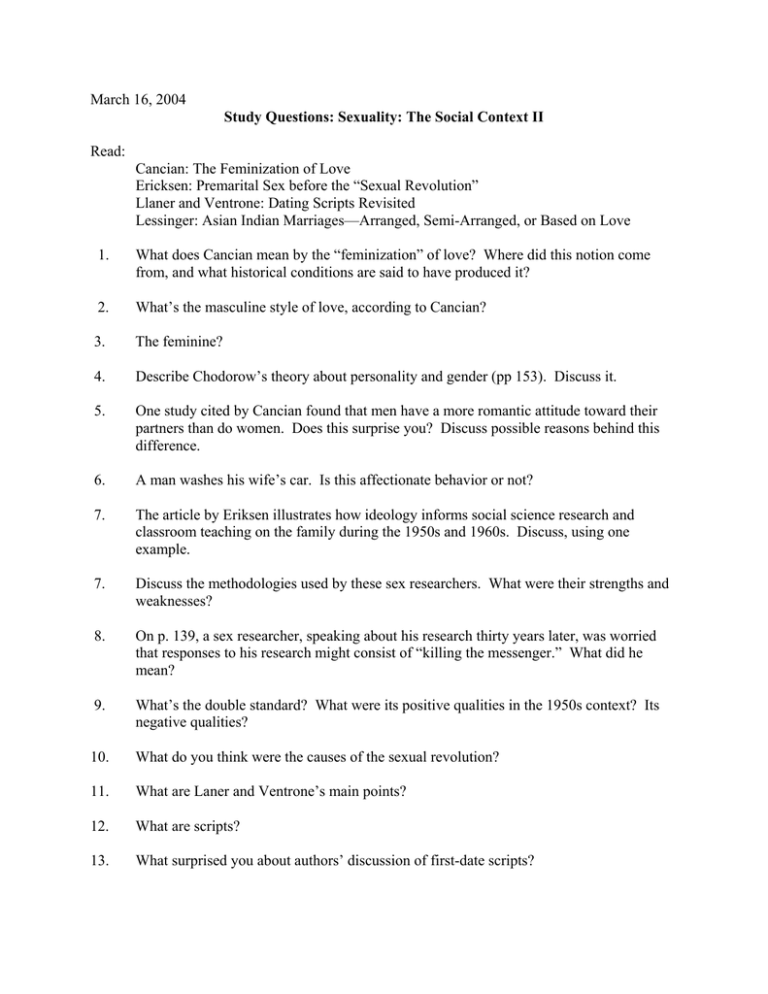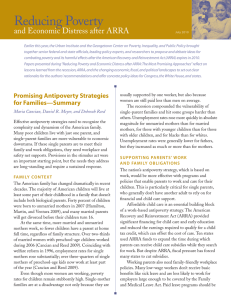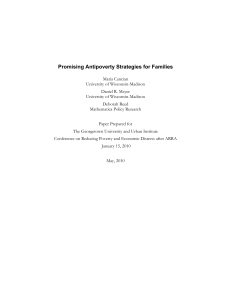
March 16, 2004
Study Questions: Sexuality: The Social Context II
Read:
Cancian: The Feminization of Love
Ericksen: Premarital Sex before the “Sexual Revolution”
Llaner and Ventrone: Dating Scripts Revisited
Lessinger: Asian Indian Marriages—Arranged, Semi-Arranged, or Based on Love
1.
What does Cancian mean by the “feminization” of love? Where did this notion come
from, and what historical conditions are said to have produced it?
2.
What’s the masculine style of love, according to Cancian?
3.
The feminine?
4.
Describe Chodorow’s theory about personality and gender (pp 153). Discuss it.
5.
One study cited by Cancian found that men have a more romantic attitude toward their
partners than do women. Does this surprise you? Discuss possible reasons behind this
difference.
6.
A man washes his wife’s car. Is this affectionate behavior or not?
7.
The article by Eriksen illustrates how ideology informs social science research and
classroom teaching on the family during the 1950s and 1960s. Discuss, using one
example.
7.
Discuss the methodologies used by these sex researchers. What were their strengths and
weaknesses?
8.
On p. 139, a sex researcher, speaking about his research thirty years later, was worried
that responses to his research might consist of “killing the messenger.” What did he
mean?
9.
What’s the double standard? What were its positive qualities in the 1950s context? Its
negative qualities?
10.
What do you think were the causes of the sexual revolution?
11.
What are Laner and Ventrone’s main points?
12.
What are scripts?
13.
What surprised you about authors’ discussion of first-date scripts?
2
14.
The authors seem to think that readers will know about the Mars/Venus dichotomy. Do
you? What is it? If you don’t, what do you think it is? How is it an example of
ideology? How true to life is it, do you think?
15.
In newspaper ads searching for marriage partners, what does “decent marriage” mean?
Discuss.
16.
Why are arranged marriages favored by so many Indians in India and the diaspora?
17.
What does “no bars” in newspaper ads mean? Discuss.
18.
Discuss the benefits and disadvantages (from the point of view of the actors) of
immigrant S. Indian families arranging for their son or daughter to marry someone from
India.
MIT OpenCourseWare
http://ocw.mit.edu
21A.230J / WGS.456J The Contemporary American Family
Spring 2004
For information about citing these materials or our Terms of Use, visit: http://ocw.mit.edu/terms.






